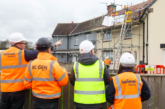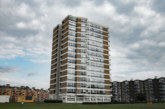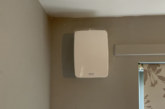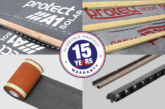 In the final part of our series on the importance of ventilation in domestic properties, John Kelly, Marketing Manager at Airflow Developments, looks at why social housing providers should take a long-term approach when selecting ventilation solutions.
In the final part of our series on the importance of ventilation in domestic properties, John Kelly, Marketing Manager at Airflow Developments, looks at why social housing providers should take a long-term approach when selecting ventilation solutions.
Although effective ventilation is a requirement of the Building Regulations and vital to protect the health and the wellbeing of residents, it can be tempting to look for the lowest cost solution that still meets the necessary standards. This is especially true when repair and maintenance budgets are under pressure, however, this can prove costly in the longer term.
One of the key issues of specifying low cost ventilation solutions is the long-term reliability. Depending on the type of system, the fans will be running at frequent intervals throughout the day, if not constantly. If the product is of a lower quality, the likelihood of failures and issues with the system is far higher, meaning more frequent visits from maintenance teams. The cost of this will accumulate over the life of the system and, for social housing providers with small teams; this can become a challenge to managing the workload.
In addition, inferior quality ventilation products will ultimately have a shorter lifespan and over the life of a property this will mean more frequent replacements. The cost of this not only includes the price of the new components but the associated costs of installing the system. Also, the disruption to tenants each time repairs or replacements have to be carried out must also be factored in.
Furthermore, if the effectiveness of the ventilation declines once in operation this can have a negative effect on the building and its residents. Poorly performing ventilation can cause moisture to build up within the property, resulting in damp, condensation and mould that will damage the fabric of the building. This is a particular issue in kitchens and bathrooms where daily activities such as cooking, bathing and showering all produce significant levels of moisture. Rectifying any damage to the interior is costly for the housing provider and disruptive to tenants in addition to the risk it poses to health.
For modern domestic properties, effective ventilation has a crucial role in protecting the health and wellbeing of occupants as well as the condition of the building. Despite the pressures to reduce costs, social housing providers can achieve improved long-term cost efficiencies by specifying higher quality ventilation solutions, rather than simply meeting the required standards.










